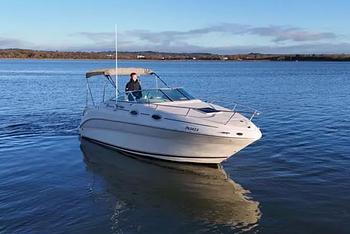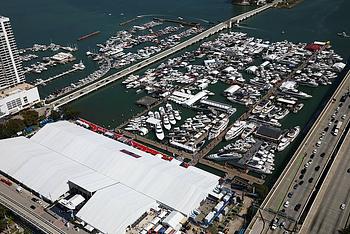If you’re planning on buying a used boat, it’s vital that you understand the boat tax laws that apply to it, both for the country that you’re buying it in and the country you want to keep it in, which might not be the same. In 2020, value added tax (VAT) on boats in Europe and the UK got more complicated when Brexit saw the UK leave the EU. It’s important not to underestimate the complexities of taxes on boats, especially on larger vessels. Boats aren’t static assets and so the tax rules can be complicated as they often differ between countries—with Brexit adding yet more complexity.
Here we take an in-depth look at what you need to know, and answer some of the questions we get asked most often.

Importing a Boat from the EU to the UK, or the UK to EU
Before Brexit, when a used boat had its VAT paid in any EU member state, then it had free movement between all those member states. So you could buy your boat in Spain, pay tax on it (or take possession of the VAT-paid status documents) and then take it to France, Italy or the UK. That is still the case for countries that are members of the EU, but Brexit meant that the UK was no longer part of the free movement, and those wanting to take their boats to the UK from an EU country might be liable to pay UK VAT again. Ultimately, buying a boat in Europe after Brexit got distinctly more complicated but as the waters settle, and new legislation is written, we’re getting a clearer picture.
Heading in the opposite direction, if you wanted to take a boat out of the UK and keep it in EU waters, you would be liable to pay VAT in the EU, unless you opt to use the Temporary Importation scheme (see below).
What is VAT on Boats in the UK?
Boats are considered the same as any other goods and are therefore taxed at 20% VAT in the UK. Boats are taxed when they’re bought as new vessels and will carry a VAT-paid status for the duration that they remain in the country (or in the case of the EU, in the region) that they were purchased in. So if you buy a used boat then it will likely have its VAT paid status and you aren’t liable to paying it again.
The difficulty lies when it comes time to take your boat from one country to another. Taking a boat out of the UK and moving it permanently to the EU, US, or any other country will likely require you paying taxes again. Traveling on your boat and spending a temporary amount of time as a visitor is permitted, so long as you keep within the time frame allowed. For the EU this is 18 months.
What is Temporary Importation (TI) and How Long Does It Last?
For British boat owners, this is one of the main benefits of Brexit. It means they can now keep a private boat in EU waters without paying the import VAT of 20% by using the Temporary Admission or Importation scheme. It allows them to keep their boat in the EU for up to 18 months without paying VAT on their vessel. Once the 18 months are up, a boat only needs to be taken out of EU waters for 24 hours before the VAT clock starts again for a further 18 months. A transit log and evidence of time spent outside of EU waters will need to be kept.
In reverse, it’s possible to request Temporary Admission in the UK if your boat is eligible:
- The boat must be registered outside of the UK;
- The owner must be resident outside of the UK;
- While the boat is in the UK it must be used by a non-UK resident;
- The boat must be identifiable by a hull or registration number.
Can you explain the Returned Goods Relief (RGR) and which boats are applicable for it?
Initially, the UK’s HMRC (His Majesty’s Revenue & Customs) announced that British-owned yachts located outside of UK waters on 31st December 2020—and which had been out for less than three years—fell under the Returned Goods Relief (RGR), meaning they could be re-imported back to the UK without incurring VAT again.
The good news is that before the end of that three-year window, HMRC VAT on boats policy was updated to announce that there will be no requirement to pay a second amount of UK VAT if vessels have been outside the UK for more than three years so long as they are being used for personal use. Boats are essentially being treated as ‘personal effects’ for their VAT status.

What is VAT on Boats in the EU?
Tax on boats purchased in EU states varies slightly depending on the country. In Spain for example it’s 21%, whereas in France it’s 20% and in Italy it’s 22%. Denmark holds one of the highest VAT rates at 25% while Greece is close with 24%. So depending on which country you purchase a new boat in, the yacht’s VAT will vary. VAT on second-hand boats is not usually required unless you don’t inherit the VAT-paid status documents when you buy the boat.
It’s important to know that a VAT-paid boat could lose its VAT-paid status if it’s sold outside the EU. If the owner, even if they’re an EU resident, wants to bring it back to the EU they will have to then pay VAT again.
What VAT evidence do I need to show EU or UK customs officials if asked?
Boat owners in the UK and EU will now need to carry evidence of VAT status onboard their vessels at all times in case they are asked for it by customs officials. So if you’re traveling from the UK over to France, for example, you will need to ensure you have the evidence with you at all times.
I’m British. Can I Buy a Vessel with Union Status and Keep It In the EU? Or Do I Need to Re-register it?
If the seller of the boat can show proof that VAT has already been paid in the EU, then the boat will retain the status of Free Movement on purchase, even if you choose to flag it to a UK registry. If you wish to import the boat into the UK, you will be liable to pay UK VAT. If you want to keep it in the EU then, as it already has Union status, you can do so. Essentially, as far as customs is concerned, the ownership of a vessel is not relevant, it is VAT paid Union status that is relevant.
What Are Taxes on Boats in the US?
In the United States, the tax picture is very different to the other side of the Atlantic. There is no Federal US sales tax applied to the purchase of boats, but instead there will be state taxes to pay which will vary from one state to another. There are three main taxes to pay on boats in the US:
- Sales Tax. This needs to be paid once in one’s state when you buy a new boat, and the rates vary depending on the state. There might also be a small local sales tax added on too. Not all states have sales tax, including Delaware and Rhode Island, whereas others have capped sales taxes such as North Caroline where tax is 3% but capped at $1,500 on boats. In Florida, the sales tax is 6% and has a cap of $18,000. In Texas it’s 6.25% with a cap of $18,750. States such as New York have a different system again, taxing boats 8.25% but only on the first $230,000.
- Use Tax. This comes into play when you keep or use your boat if it’s different to the state in which you paid the sales tax. So if you buy a boat in State A and pay sales tax, you would need to pay use tax if you chose to keep it or use it for long periods in State B. Having said that, not all counties and cities within a state charge a use tax. The Sales Tax Institute offers updated figures for all states.
- Personal Property Tax. Regardless of sales and use taxes, you will need to pay personal property tax on your boat each year in the same way you would for any other ‘movable asset’ such as an RV. Again rates vary considerably from one state and city to the next.
For more advice on Paperwork and Taxes When Buying a Boat check out our comprehensive guide.

How Can You Import a Boat from the US to the EU and UK?
Bringing a boat across the Atlantic to reside in either the EU or the UK takes some prior planning and it’s highly advisable to contact a marine tax specialist before embarking on the journey. As we’ve seen, in the EU foreign boats can take advantage of the Temporary Importation Scheme for up to 18 months. However, if they want to remain permanently they will need to pay VAT at the rate of the relevant EU country they’re in. If you’re importing a boat from the USA to the UK, you can also apply for Temporary Admission for up to 18 months if you comply with the eligibility requirements (see above).
Until 2022 the EU and UK had both imposed 25% customs tariffs on the import of US-origin yachts in response to tariffs imposed by the US on steel and aluminum. Thankfully a resolution between both the EU and UK with the US has seen that tariff now be lifted. Now the amount of import duty depends on the type and size of the boat and is between 1.7 and 2.7%.
How Can You Import a Boat from the UK or EU to the US?
Importing a boat into the United States is less costly than the other way around. The import duty on second hand boats is 1.5% of the value of the boat for motorboats and sailboats, and no sales tax needs to be repaid for boats coming into the US. To calculate the import duty you’ll need to supply the customs agent with a Pro-Forma Invoice, value survey, or purchase agreement.
Ask an Expert
When importing a boat, it’s always a good idea to get professional legal advice with regards to tax as it can get quite complicated, especially in the aftermath of Brexit. Always ensure you get all the paperwork when buying a used boat, including VAT-paid documents, and keep it in a safe place for when it comes time to sell it again or in the case that you choose to take it to another country or region permanently.




